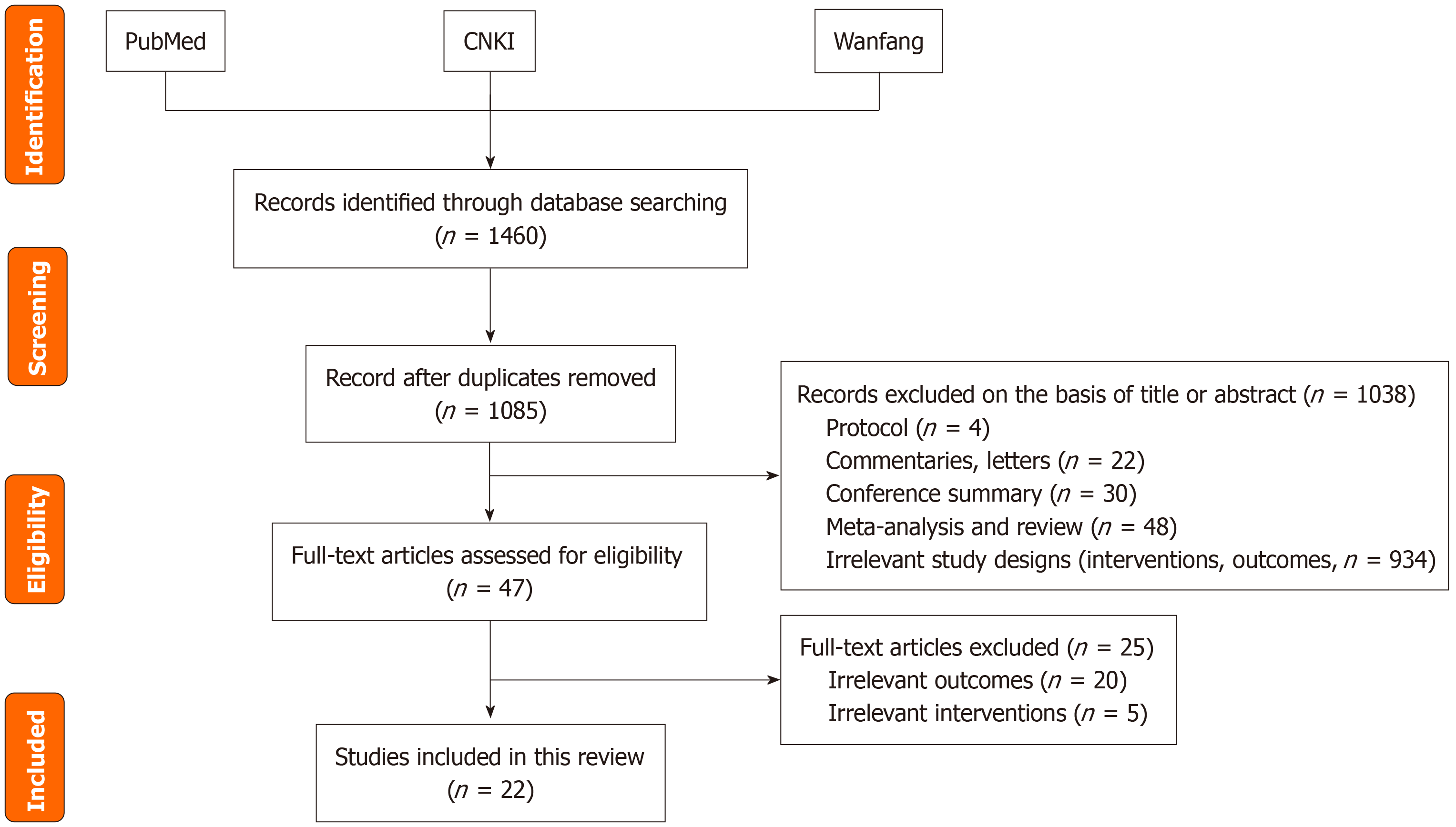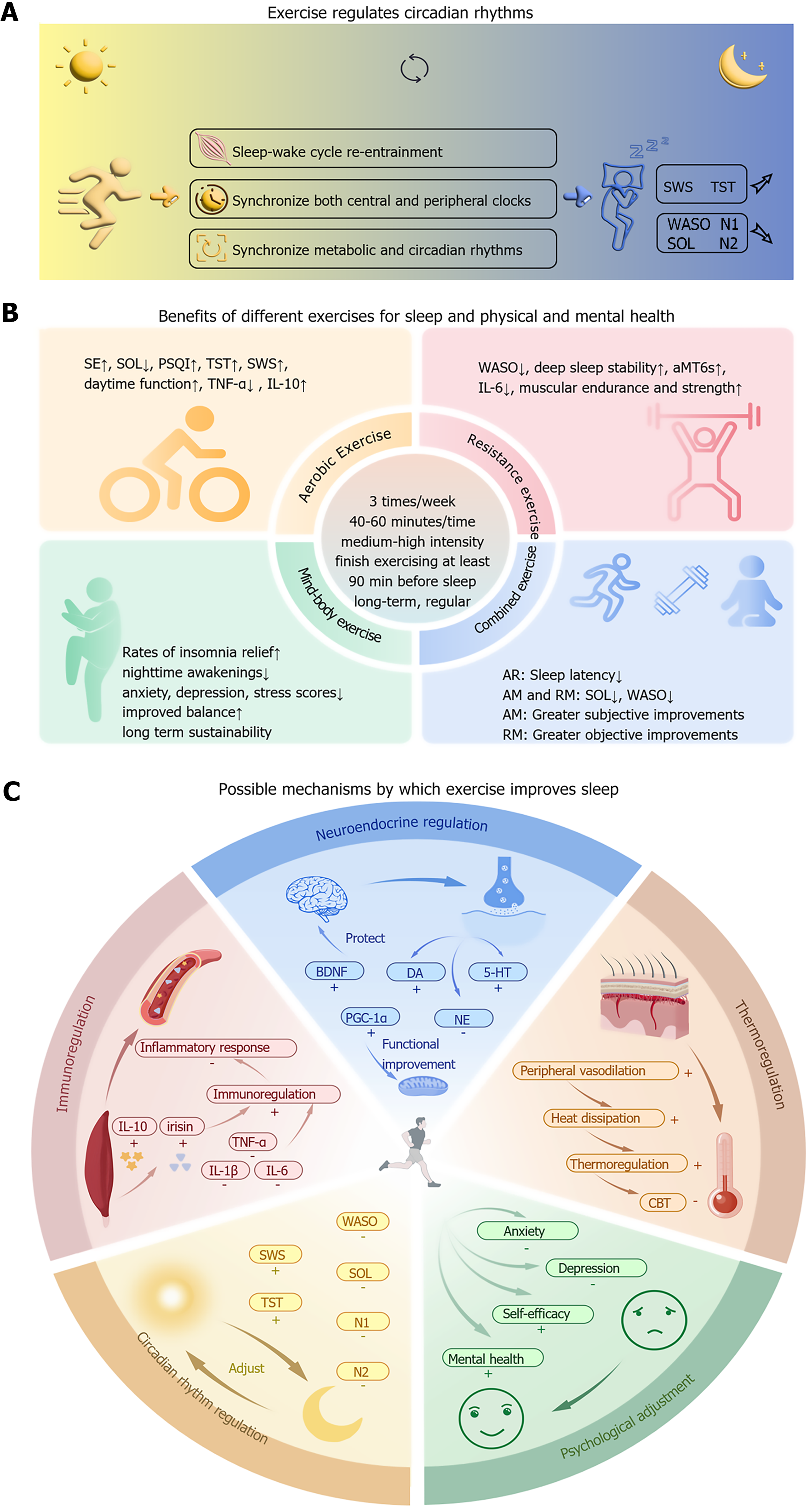Copyright
©The Author(s) 2025.
World J Psychiatry. Oct 19, 2025; 15(10): 108884
Published online Oct 19, 2025. doi: 10.5498/wjp.v15.i10.108884
Published online Oct 19, 2025. doi: 10.5498/wjp.v15.i10.108884
Figure 1 Flow chart of study selection.
Figure 2 Outline of the whole review.
A-C: Exercise regulates circadian rhythms(A); benefits of different exercise for sleep and physical and mental health (B); possible mechanisms by which exercise improves sleep (C). SWS: Slow wave sleep; WASO: Wakefulness after sleep onset; SOL: Sleep onset latency; TST: Total sleep time; N1: Sleep onset stage; N2: Light sleep stage; SE: Sleep efficiency; PSQI: Pittsburgh Sleep Quality Index; TNF: Tumor necrosis factor; IL: Interleukin; AR: Aerobic exercise + resistance exercise; AM: Aerobic exercise + mind-body; RM: Resistance exercise + mind-body; BDNF: Brain-derived neurotrophic factor; DA: Dopamine; 5-HT: 5-hydroxytryptamine; PGC: Peroxisome proliferator-activated receptor-gamma coactivator; NE: Norepinephrine; CBT: Core body temperature.
- Citation: Fei LL, Zhao SX, Chen YF, Hao CF, Xin YJ. Exercise and sleep health in college students: Efficacy, mechanisms, and implications for practice. World J Psychiatry 2025; 15(10): 108884
- URL: https://www.wjgnet.com/2220-3206/full/v15/i10/108884.htm
- DOI: https://dx.doi.org/10.5498/wjp.v15.i10.108884














